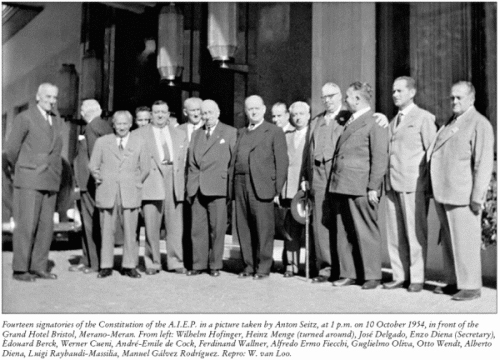The difference?
study and application since 1954

brief history
Soon after the Second World War, the tourist board of Merano-Meran tried to revive what had once been a flourishing tourist industry. Among other promotional activities, such as the traditional steeplechase races and motor-rallies, it was thought that high-class philatelic exhibitions might help in bringing back the international flair of the past. In 1948 a first international philatelic exhibition was held, and it was so successful that it was repeated annually, for the following 21 years. Although these exhibitions were small by today’s standards, they nevertheless became important high-level events, and they attracted the greatest philatelists of continental Europe. The juries were composed of the leading experts of Italy, Germany and Austria.
On 8 October 1954, the 7th International Exhibition of Merano-Meran was opened at the same Kurhaus where the Congress of 2004 was held.
After the inaugural speeches followed ‘a vermouth of honour’ and the official visit to the exhibits. The fact that the leading experts were to hold the First Congress of Philatelic Experts, was announced as an additional attraction. On Saturday afternoon, 9 October 1954, the first meeting of the Congress was held at the Grand Hotel Bristol. Nineteen experts participated at the meeting that was held under the presidency of the Austrian Dr Ferdinand Wallner. After discussing the aims of the planned institution, and the formalities of admission, Dr Heinz Menge, a prominent German Judge, was asked to draft the Statutes for the following day. The meeting continued in the morning of 10 October, with “passionate discussions.”
In a short account of this meeting, Dr Wallner outlined the aims of the new Association as follows:
- To share the knowledge, for the good of philately;
- To defend the moral and material interests of the members;
- To promote the exchange of information between members.
According to Wallner, one of the most important results of the First Congress of Philatelic Experts was the thesis that ‘universal experts’ were figures of the past – instead, every expert should be a specialist for a strictly defined area. Wallner realised that it would not be easy to bring together experts, who had been used to work in ‘splendid isolation.’ Finally, the Meeting agreed that the A.I.E.P. would support the FIP’s Geneva Convention, which was, at any rate, regarded as an institution with totally different aims.
Dr Wallner was provisionally appointed as the first President of the A.I.E.P., Dr Menge as Vice-President. Enzo Diena was confirmed as Secretary-Treasurer. The newly elected President addressed the assembly with the following words: “My friends, let us put aside all personal interests, all narrow-minded vanities and all selfishness and let us create an institution that shall serve solely the purpose of defending the truth in philately and of protecting the collectors.
The meeting was concluded with the signing of the constitution of the Association Internationale des Experts Philatéliques by those present. After the signing ceremony, at 1 p.m., Anton Seitz took the historic picture of the signatories of the original charter that is shown here – most unfortunately, the document has not survived.
